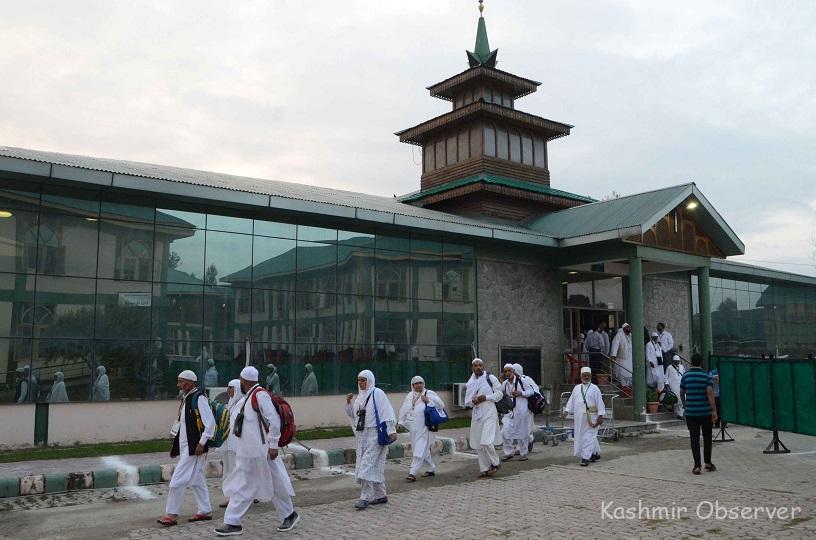
Srinagar- The number of Hajj applications from Jammu & Kashmir has plummeted from over 35,000 in 2017 to just 3,500 this year, with a decline of over 90% since 2017. This represents a decline of more than 55% compared to the previous year.
According to details, despite multiple extensions for Hajj 2025 applications, the Jammu and Kashmir Hajj Committee has received only 3578 applications, with last year’s total at 8,147 against a quota of 8,200.
With just two days remaining before the September 30 deadline, the number of applications has fallen sharply.
In 2017, 35,215 people expressed interest in the pilgrimage, while 32,330 applications were received in 2018. Applications decreased to 21,566 in 2019, and the COVID-19 pandemic halted the 2020 pilgrimage altogether. In 2021, more than 7,000 applications were submitted, but the pilgrimage was cancelled for a second consecutive year due to ongoing health concerns.
Ideally, the demand for Hajj used to exceed the quota, after which a draw system was introduced for allocation. However, this year’s data shows a troubling trend across all districts in Jammu & Kashmir. Only Doda has witnessed a slight increase of over 9%.
Srinagar district has seen a steep decline of over 64%, receiving only 937 applications for 2025 compared to 2,607 in 2024. Similarly, Budgam’s applications dropped from 873 to 325, marking a decline of over 62%. Anantnag and Bandipora also reported decreases of over 50%, while Baramulla received just 349 applications, down from 781 in the previous year.
A key factor in the decline is the high cost of the pilgrimage. Pilgrims travelling from Srinagar face fees of around Rs 4.2 lakh, compared to Rs 3.6 lakh from Delhi, primarily due to higher airfares— Rs 1.7 lakh from Srinagar versus Rs 1.1 lakh from Delhi. However, authorities clarify that pilgrims are free to choose their embarkation point.
Economic experts said many families are prioritising essential expenses such as healthcare and education over the pilgrimage due to financial strains.
Advocate Zahoor, a local social activist, said the decline is due to rising prices and economic hardship. He said daily survival has become increasingly challenging for people of the region.
“People are struggling to make ends meet, and basic living costs have skyrocketed. Even local contractors are finding it hard to compete with outsiders for work,” he said. “Works they used to do are done by outsiders. Where will the money come from? People are in economic stress as there are minimal jobs and businesses.”
Zahoor said the economic stability could return if policies for the region are revised and opportunities will be provided to the locals.
Follow this link to join our WhatsApp group: Join Now
Be Part of Quality Journalism |
Quality journalism takes a lot of time, money and hard work to produce and despite all the hardships we still do it. Our reporters and editors are working overtime in Kashmir and beyond to cover what you care about, break big stories, and expose injustices that can change lives. Today more people are reading Kashmir Observer than ever, but only a handful are paying while advertising revenues are falling fast. |
| ACT NOW |
| MONTHLY | Rs 100 | |
| YEARLY | Rs 1000 | |
| LIFETIME | Rs 10000 | |












